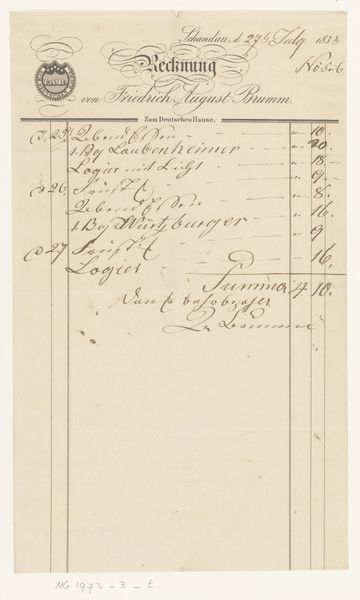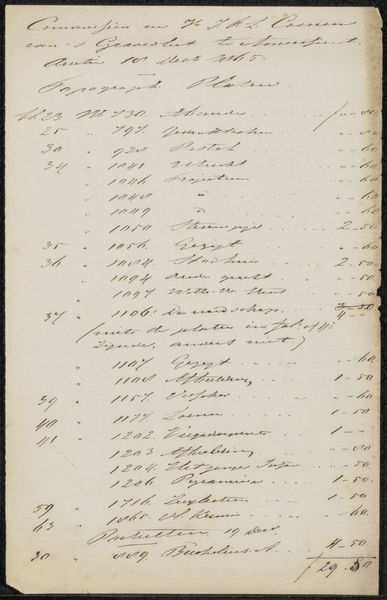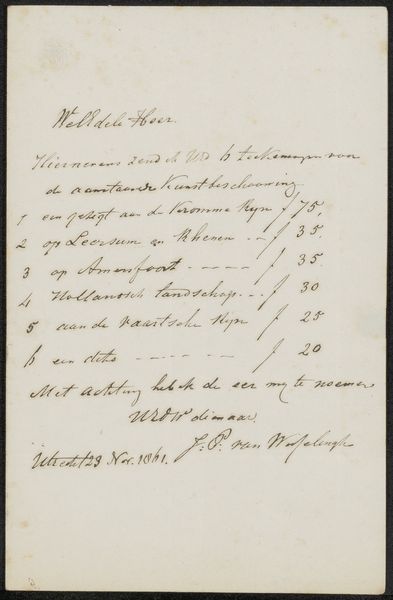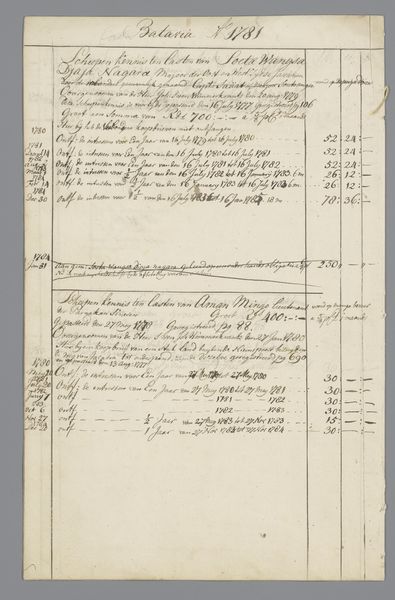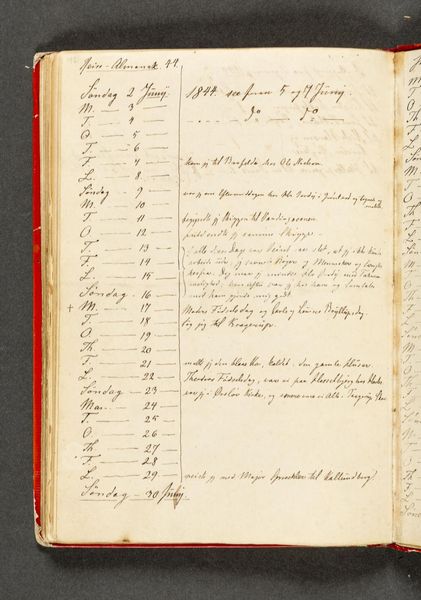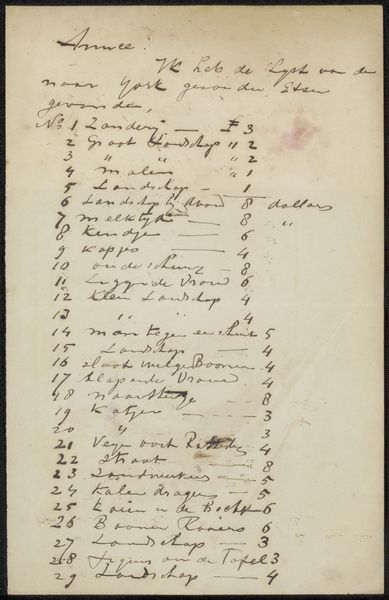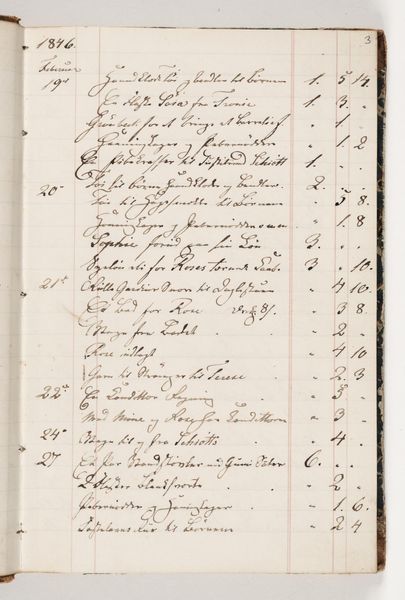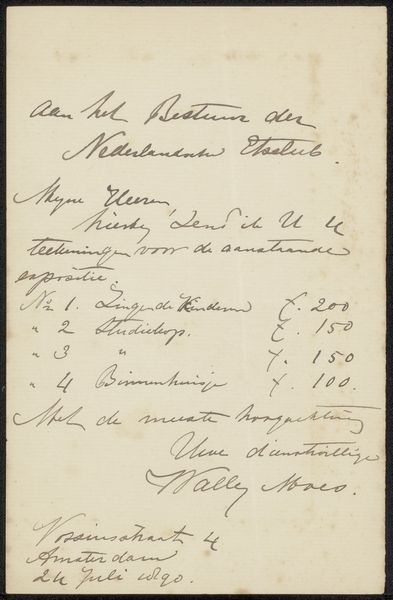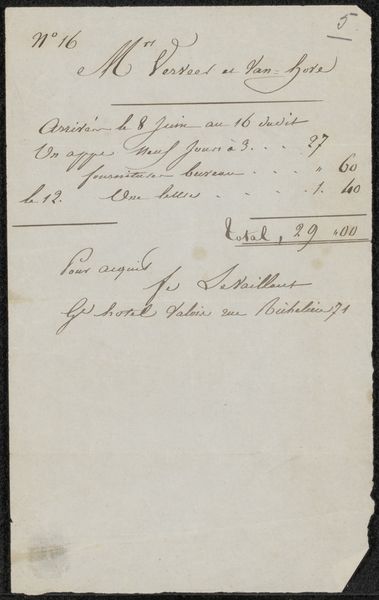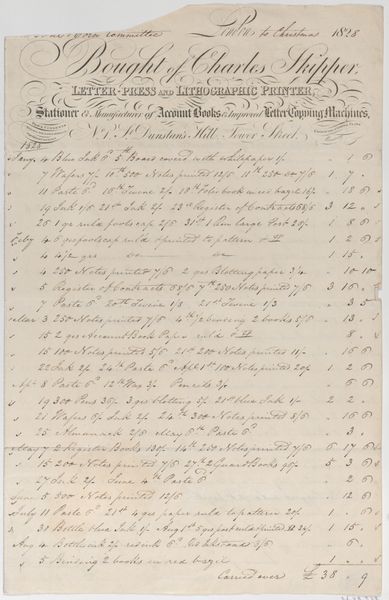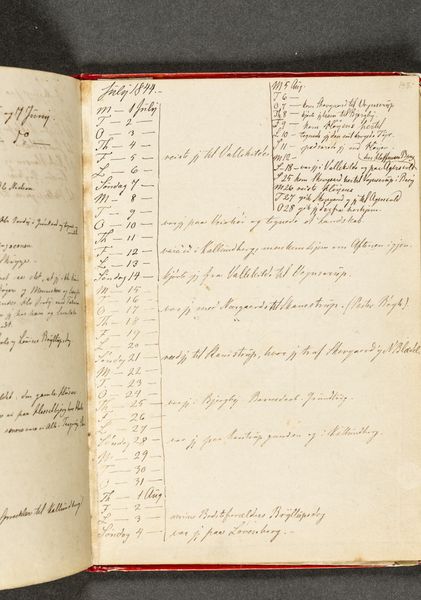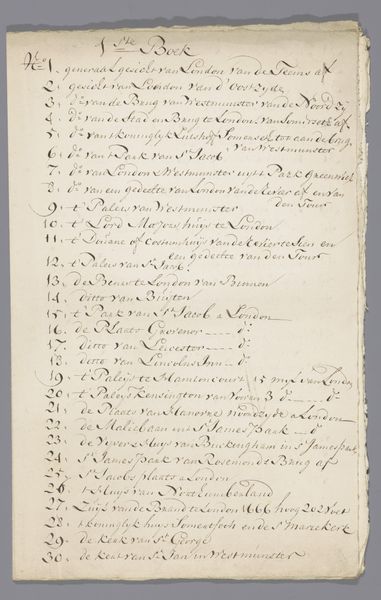
drawing, paper
#
drawing
#
dutch-golden-age
#
paper
#
15_18th-century
#
genre-painting
Copyright: Rijks Museum: Open Domain
Curator: Here we have a drawing by Francina Margaretha Huysum, created in 1777. It's titled "Nota aan mevrouw Hartzink". Editor: Well, my first impression is...functional. It looks like an inventory or a receipt, maybe? Very orderly but also a bit…faded, like whispers from another century. Curator: You're absolutely right. It *is* essentially an invoice. Francina van Huysum was the daughter of Jan van Huysum, a famous flower painter, and she herself was known for her still lifes. This "nota," or note, lists a series of drawings by Michiel van Huysum, sold to a Mrs. Hartzink. The list includes some exquisite botanical studies "tulips" are mentioned, “marquises” and “a banquet of flowers”. Editor: It's interesting, isn't it, to see the artistic marketplace so plainly laid out. We have an artist compiling a list of drawings, perhaps to get fair monetary returns. Paper as the material it's made of, would likely be crafted from discarded textiles, reminding us how recycling was interwoven in pre-industrial economies and labor in pre-capitalist setting. And that handwriting! It really grounds the art, shows it within the daily realities of the 18th century. It begs to see more work from Francina, her handwriting style is fascinating. Curator: Exactly! And considering her lineage, specializing in realistic still life with the flowers as a family legacy, it's fascinating to see her function in a transactional context. You almost wonder, looking at the neatness, if she perhaps infused her precision as an artist into this seemingly mundane document, a quiet rebellion of creativity in the face of commerce. I can see that level of care through the artist’s touch. Editor: Perhaps. Or maybe it simply reflects good accounting! All the same, considering the domestic nature of this piece as material— it provokes questions of class and gender, especially related to 18th century business transactions! I am wondering about her audience? Did the art reach middle or high-class households and what impact it had at the time! . Curator: Ultimately, the artwork provides such a fascinating peek into an artist's life, art as a sale, and that intersection is pretty telling when considering Dutch Golden Age culture. Editor: Yes, and also to be mindful about materiality, consumption, and labor within the social context that generated it. Always!
Comments
No comments
Be the first to comment and join the conversation on the ultimate creative platform.
